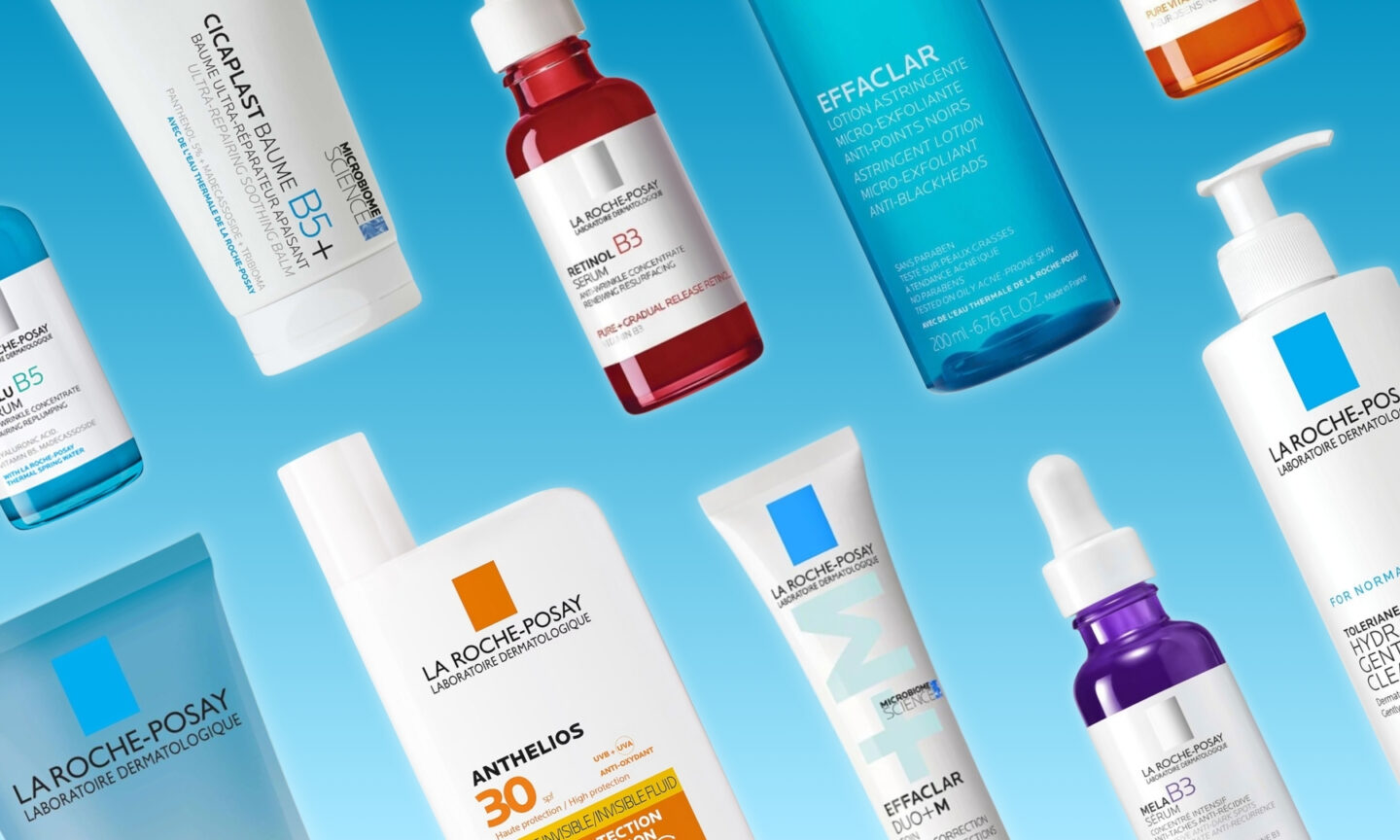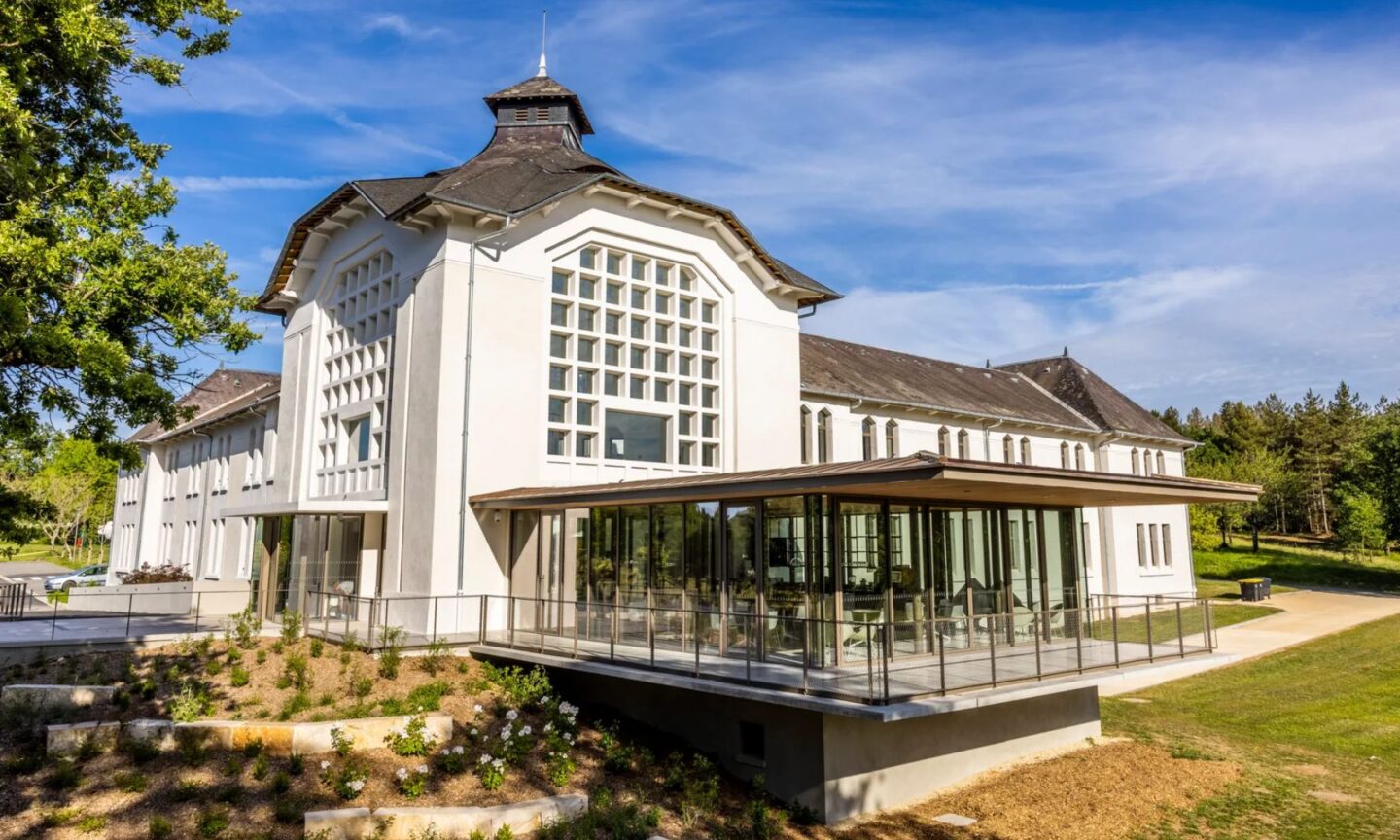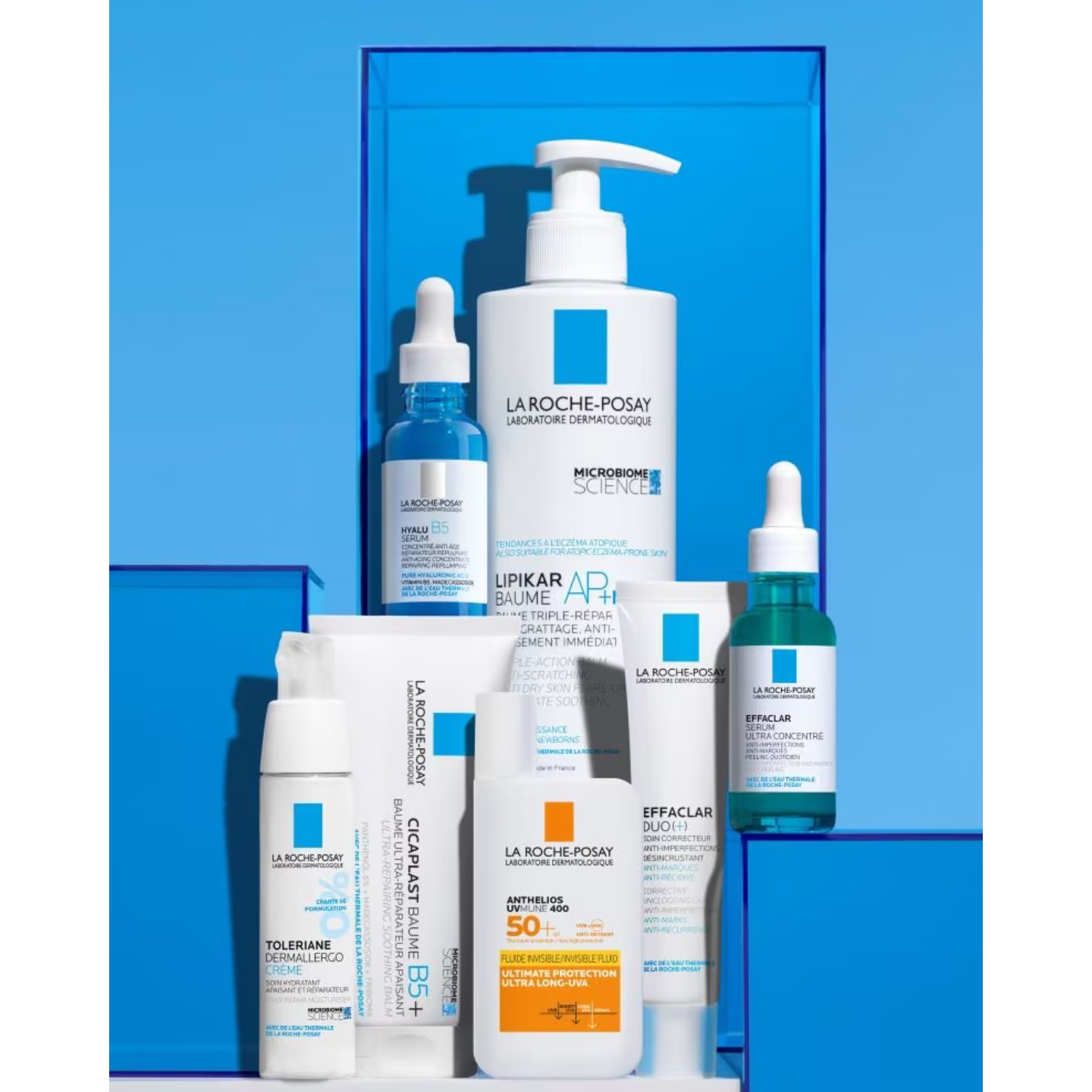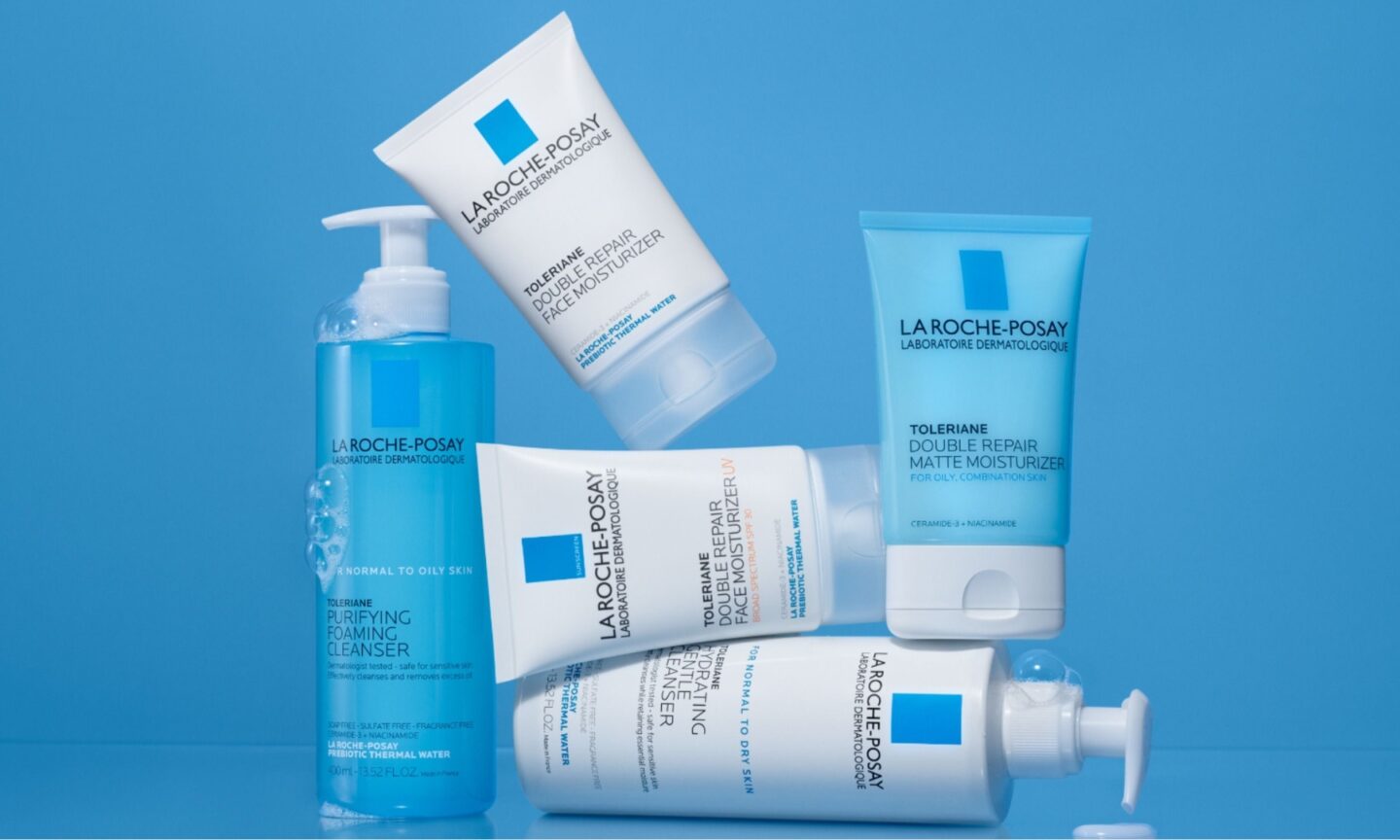The History of La Roche-Posay

In the 50 years since its founding, La Roche-Posay has maintained its reputation as the go-to brand for sensitive skin. Recommended by tens of thousands of dermatologists and stocked in pharmacies worldwide, it all began with a single, powerful ingredient: selenium-rich thermal spring water.
As La Roche-Posay marks half a century in the beauty industry, we felt it was the right time to revisit the history behind one of France’s most iconic skincare brands.
Medieval Origins
La Roche-Posay’s story begins in the small French town that shares its name, nestled in the Vienne region. According to legend, a 14th-century knight in the service of Bertrand du Guesclin stopped to water his horse at the town’s spring. The horse, suffering from a skin condition, bathed in the water, and within days, its sores began to heal. Word of the spring’s remarkable properties quickly spread, and over the following centuries, its reputation for healing continued to grow.
By 1617, the spring had been declared a thermal spa of public benefit by the court of King Louis XIII. In 1869, it received official recognition as a station hydrominérale by the French Academy of Medicine, allowing therapeutic treatments to be administered under medical supervision. In the early 19th century, following his return from Egypt, General Napoleon Bonaparte commissioned the construction of a thermal hospital in La Roche-Posay to treat his soldiers’ skin conditions. But it wasn’t until the 20th century that the spring’s benefits began to be harnessed beyond the town itself.

A Brand is Born
In 1975, French pharmacist René Levayer founded La Roche-Posay Laboratoire Dermatologique with a mission to bring dermatological expertise into everyday skincare. With the support of leading dermatologists, Levayer built the brand around La Roche-Posay’s renowned thermal spring water, celebrated for its antioxidant, anti-inflammatory, and skin-repairing properties.
At a time when the beauty industry prioritised luxury and aspiration in its products, Levayer’s approach was considered revolutionary: he championed science and simplicity, crafting formulas that were minimalist and focused on treating real skin concerns.
Soon after its launch, the brand gained credibility within the medical community. Its emphasis on clinical efficacy and high tolerance made it a trusted choice for those dealing with eczema, rosacea, psoriasis, acne, and post-procedural skin.

Defining Dermocosmetics
Throughout the 1980s and 1990s, La Roche-Posay played a pivotal role in establishing dermocosmetics — a skincare category positioned between pharmacy and beauty, with products formulated for dermatological needs yet accessible to all.
Several of the brand’s now-iconic lines were introduced during this period, including Effaclar for blemish-prone skin, Lipikar for dry and atopic skin, Cicaplast for barrier repair, and Anthelios, its gold-standard sun protection range.
In 1995, the brand furthered its commitment to education and public health by launching the La Roche-Posay Foundation, dedicated to funding dermatological research and raising awareness around skin cancer prevention. Its efforts have included free screening initiatives, UV education campaigns, and ongoing research into skin barrier function and environmental damage.
L’Oréal Acquisition
In 1989, La Roche-Posay was acquired by L’Oréal in a strategic move that brought increased investment in R&D and significantly expanded the brand’s global footprint. Under L’Oréal’s ownership, La Roche-Posay has emerged as a leader in microbiome science, environmental protection, and post-procedure skin recovery, further solidifying its role as a pioneer in dermocosmetic innovation.
La Roche-Posay Today
Now available in over 60 countries, La Roche-Posay is one of the most recommended skincare brands by dermatologists worldwide.
At the heart of the brand remains the La Roche-Posay Thermal Centre, located in the original village and recognised as the only thermal facility in Europe exclusively dedicated to dermatology. Originally established in 1905 as the Station Thermale de La Roche-Posay, the centre was acquired by L’Oréal in 2018 to further integrate therapeutic expertise into the brand’s portfolio.

Each year, the Thermal Centre welcomes around 8,000 patients, including many children, who receive doctor-prescribed treatments for conditions such as eczema, burns, lichen planus, and post-cancer skin complications. The spring water, rich in selenium and known for its soothing and antioxidant properties, is administered under strict medical protocols and tested for purity.
Iconic Ranges and Cult Favourites
La Roche-Posay’s skincare portfolio is built around several hero ranges, each designed to address specific skin concerns:
- Toleriane is formulated for very sensitive or allergy-prone skin, using minimal ingredients such as neurosensine, glycerin, and shea butter to calm irritation and reinforce the skin barrier.
- Anthelios offers advanced sun protection for sensitive skin, with broad-spectrum UVA, UVB, and infrared defence powered by patented filters like Mexoryl XL and SX.
- Lipikar nourishes dry and atopic skin with ingredients like niacinamide and shea butter, helping to restore lipids and relieve discomfort.
- Cicaplast focuses on repairing the skin barrier and soothing post-procedure or compromised skin using panthenol, glycerin, and thermal spring water.
- Effaclar targets oily and blemish-prone skin with salicylic acid, LHA, and Airlicium to unclog pores, reduce shine, and minimise imperfections.
- Hyalu B5 delivers deep hydration and visible plumping for dehydrated or fatigued skin, combining hyaluronic acid with vitamin B5 to support skin recovery.

Among its most celebrated products is the Cicaplast Balm B5 Multi-Purpose Repairing Balm. Infused with vitamin B5, madecassoside, glycerin, shea butter, and La Roche-Posay Thermal Spring Water, it soothes, hydrates, and visibly restores sensitive, irritated, or damaged skin. Another bestseller, the Anthelios UVMune 400 Invisible Fluid SPF 50+, is a sweat- and sand-resistant sun cream that offers high broad-spectrum protection in a featherlight, invisible formula. Specifically designed for sensitive skin, its non-greasy texture makes it ideal for daily use, whether worn alone or layered under makeup.
The Effaclar Duo+M Moisturiser is a go-to solution for blemish-prone skin, helping to unclog pores and reduce blackheads, post-acne marks, and even stubborn imperfections. Powered by salicylic acid, it delivers visible results in as little as eight hours while keeping the skin hydrated and balanced. Finally, the Hyalu B5 Hyaluronic Acid Serum targets dehydration with a potent blend of hyaluronic acid and vitamin B5, instantly replenishing moisture and restoring suppleness, bounce, and radiance.
Priced between £8.50 ($9.99) and £48 ($54.99), all La Roche-Posay products are dermatologically tested, fragrance-free, alcohol-free, and non-comedogenic, making them suitable even for the most sensitive skin.
La Roche-Posay products are available in pharmacies worldwide, as well as at major retailers including Boots and Sephora in the UK, and CVS and dermstore.com in the US.